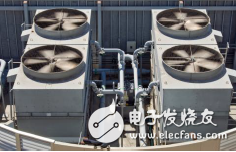Heavy load pressure sensor application
Whether it's the pressure from a hydraulic measurement control circuit that feeds back pump pressure in an HVAC system, or the pressure of the coolant flowing through the system, heavy-duty sensors are capable of delivering a high-level signal. As design engineers work on increasingly complex control systems, they face the challenge of integrating more feedback signals than ever before. This requires selecting components that offer high accuracy, lower overall costs, and ease of integration. Traditional control systems often rely on pressure switches, which only open or close around a set point and provide limited real-time data. These systems are typically used for basic monitoring rather than proactive control.
In contrast, systems using pressure sensors can detect pressure spikes in real time, providing early warnings before a potential hazard or system failure occurs. By connecting these sensors to a computer, users gain accurate insight into actual system pressures, enabling precise monitoring and control. Pressure data is essential for measuring system performance dynamically, tracking usage patterns, and maintaining energy efficiency. With sensor-based systems, engineers can collect more detailed and actionable data points, leading to better decision-making and improved system reliability.
In short, a heavy-duty pressure sensor is a robust device featuring a protective housing, a metal pressure port, and the ability to output high-level signals. These sensors are commonly housed in cylindrical enclosures—either metal or plastic—with a pressure port on one end and a cable or connector on the other. They are specifically designed for use in extreme environments, such as those with wide temperature ranges or high levels of electromagnetic interference. Industries like manufacturing, transportation, and automotive rely on these sensors to monitor critical fluid pressures, including coolants, lubricants, and hydraulic fluids. Their ability to detect pressure anomalies quickly helps identify blockages or failures and allows for immediate corrective action.
As control systems become more intelligent and complex, sensor technology must also evolve to meet new demands. The era of requiring additional signal conditioning or frequent calibration is fading. Today, engineers can confidently select sensors that are ready to use out of the box, without worrying about functional issues during installation or operation. Given the variety of sensors available on the market, however, it's crucial to carefully evaluate quality, consistency, and long-term performance. Not all sensors are created equal, and choosing the right one is key to ensuring system success.
When planning a sensor implementation, it's important to first understand the application scenarios and assess what alternatives are available. Design requirements and specifications should guide the selection process. Over the past few decades, control and monitoring systems have evolved significantly, driven by increased complexity and a shift toward electronic-based solutions. These changes include moving from manual systems to automated controls, integrating multiple components into compact designs, and placing greater emphasis on cost-effectiveness. For heavy-duty applications, environments can be extremely challenging, ranging from wide temperature extremes (-40°C to 125°C) to exposure to harsh media like refrigerants, oils, and hydraulic fluids. Though not the most extreme, these conditions represent the majority of industrial and transportation applications.
Heavy-duty pressure sensors are widely used in various industries. In HVAC and refrigeration systems, they monitor compressor inlet and outlet pressures, rooftop chillers, refrigerant recovery systems, and oil pressure. In air compressors, they track performance metrics such as inlet and outlet pressures, filter pressure drops, cooling water pressure, and oil pressure. In transportation, they help maintain heavy equipment by monitoring critical systems like hydraulics, brake pressure, oil pressure, transmissions, and truck/trailer air locks.
With so many sensor types available, quality varies significantly. It's essential to thoroughly evaluate candidates based on factors like reliability, calibration, zero compensation, sensitivity, and total error range. Choosing the right sensor ensures long-term performance and system stability.

Figure: In HVAC/refrigeration applications, heavy-duty sensors are used to monitor compressor inlet and outlet pressures, rooftop chillers, and other critical pressure systems.
When selecting a sensor for industrial or transportation use, several criteria must be considered. First, the sensor must be reliable and consistent, ensuring that any unit can be swapped out without affecting system performance. Second, cost is always a concern, especially when upgrading older systems or replacing legacy components. Are you replacing just the sensor, or an entire module? Do you need pre-calibrated or fully compensated units? These decisions impact both initial and long-term costs.
Configurability is another important factor. Are you looking for a standardized product, or do you need a customized solution? Customization options may include different connectors, pressure interfaces, reference types, ranges, and output formats. Whether you're purchasing a standard or configured model, the sensor should meet your exact design needs and be available quickly. Additionally, getting samples early in the design phase can help avoid delays in time-to-market.
Ware Resistance Lining Ceramics
Ware Resistance Lining Ceramics,Alumina Tile Plat,Ware Ceramic Liner,Alumina Tiles Plate
Yixing Guangming Special Ceramics Co.,Ltd , https://www.yxgmtc.com